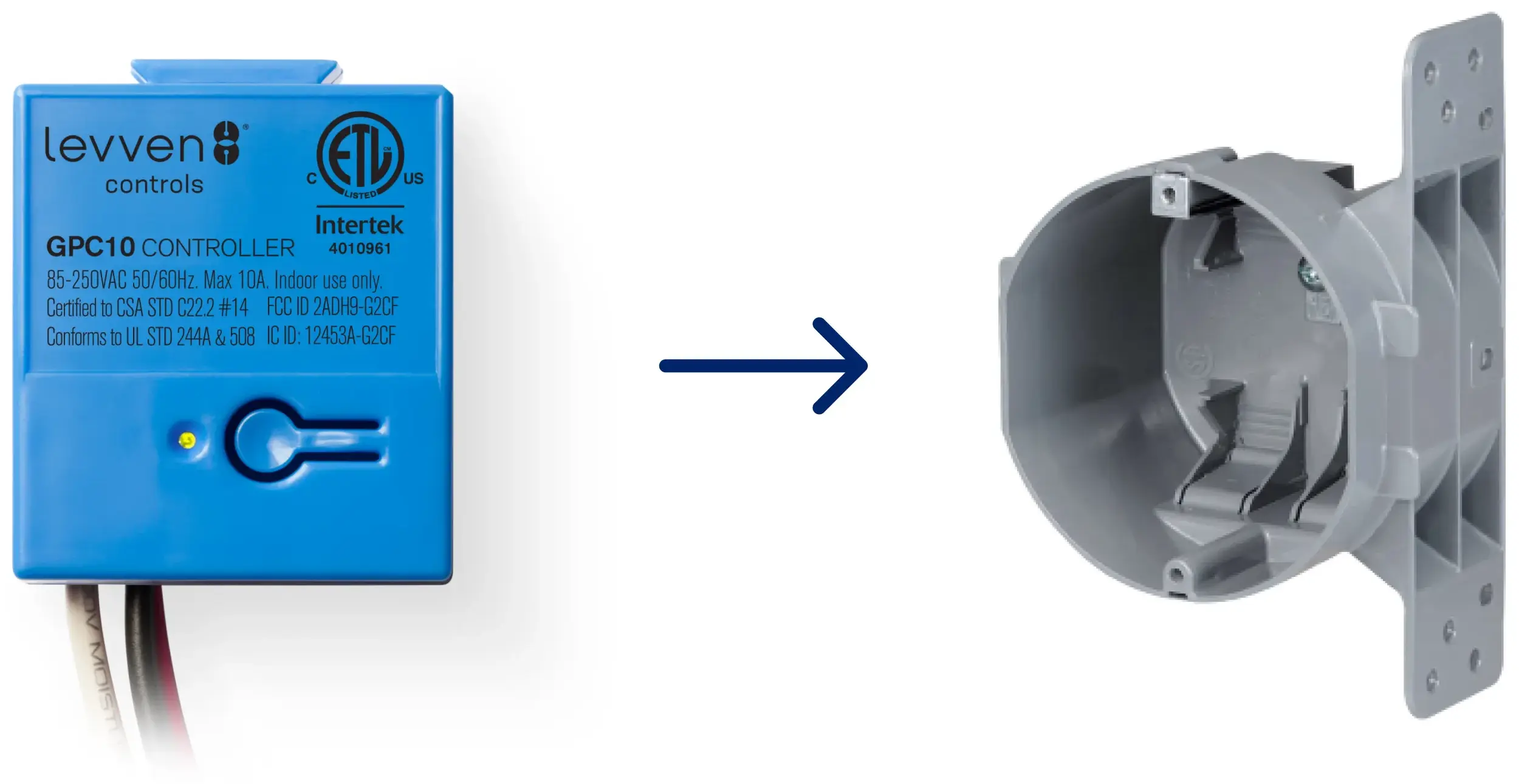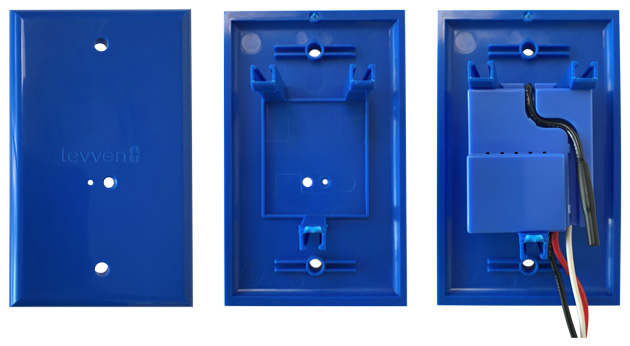Levven vs Traditional
Quick animated video that describes how Levven installations differ from traditional wiring.
How to Wire for Constant Power
Plan the locations of power controllers and the connections between junction boxes to:
-
Efficiently route all the wiring
- Minimize the number of holes that need to be drilled
- Maximize wire savings
Levven’s redline drawing offers an optimal wiring plan for the installation.
Watch the example in the video:
Boxing the Home
One Single-Output Power Controller

A single-output power controller counts as two conductors in box fill. Use minimum 25 cubic inch deep plastic boxes (such as NuTek WOCT or similar for your locale).
Two Single-Output Power Controllers

Two single-output power controllers use a 4x4 box with mud ring OR a deep plastic box with extension ring (40 cubic inch min).
Switching Plugs, Motors, and Loads Without Boxes

For a switched plug to control lighting only, use a GPC10 controller in an 18 cubic inch box. The installation must be finished with a label for "Lighting Only" or similar.

For a switched plug using the GPC20 power controller, use a 4x4 box. Finish the installation with a mud ring or blanking plate with an identifying label.
Wiring the Junction Boxes
There are various methods of installation of Levven controllers. The method best suited for each situation is dependent on factors such as:
- How many controllers are in a junction box.
- What the power needs are for the appliance (constant or on command).
- Whether the controller is directly connected to the appliance or in a separate box.
Controller and Switched Load in the Same Junction Box
When the power controller is installed in the same junction box as its load, use Rough Wiring Method 1 in the video below.
Controller and Switched Load in Different Boxes
When the power controller is installed in a junction box near its load, but not in the same junction box, use Rough Wiring Method 2 in the video below.
An example of where this may be used is when a light is mounted to a pan box and the controller is installed in a nearby junction box.
Two Controllers in One Junction Box, Each Controller Switching a Different Load
When there are two power controllers in a junction box, and each controls a different load, use Rough Wiring Method 3 in the video below.
An example of where this may be used is controlling a bath exhaust fan and vanity lights with two controllers, where the controllers are located in a nearby smoke detector box.
Wiring for Switched Plugs
The video below shows the optimal method for wiring the home to switch 15A circuits as well as low-draw loads such as lamps.
Wiring for Blue Pairing Plate
At the trim stage of construction, the electrical installer installs a GPC10 controller in a Levven Blue Pairing Plate. The Blue Pairing Plate allows the homeowner to add devices to the home group.
The Blue Pairing Plate holds one controller with a hole to access the controller's grouping/pairing button.

Location of Blue Pairing Plate
At rough-in, a single-gang box is installed and wired for the Blue Pairing Plate. This box should be in one of three locations:
- Beside the electrical panel (when the electrical panel is inside the home)
- In the garage (when the electrical panel is outside of the home)
- If there is no garage, locate the box inside the closet for the front or rear entry.
The controller that gets installed in this box will typically be wired to control a nearby light:
- Utility room light (if Blue Pairing Plate is beside the electrical panel)
- Garage light (if Blue Pairing Plate is installed in garage)
- Closet or foyer light (if Blue Pairing Plate is installed in closet or entryway)